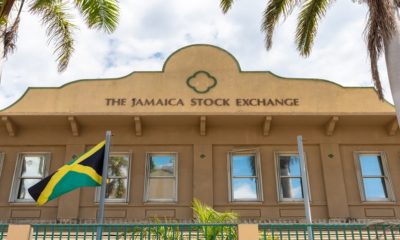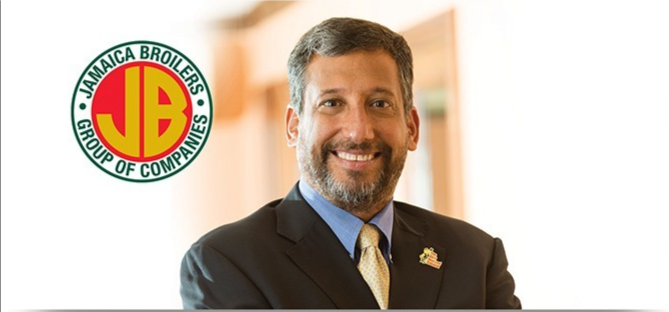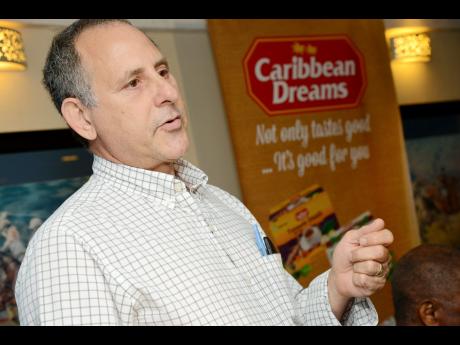The Coconut Industry Board (CIB), is encouraging farmers to invest in coconut production as they stand to benefit from grants and technical assistance to undertake projects.
Field Officer from the CIB, Easton Fraser, addressing a meeting of the St. Elizabeth Branch Societies of the Jamaica Agricultural Society (JAS), held recently at the Rural Agricultural Development Authority’s (RADA) office in the parish, said that the board has a programme in place, whereby qualified farmers are given coconut seedlings, fertiliser and technical support.
“The Coconut Industry Broad will provide you with the seedlings and fertiliser grant free of cost for four years. We will also come in and show you how to plant the seedlings. All you have to do on your part is to prepare the land and register every year with the CIB as a coconut farmer,” he informed.
He noted however, that in order to receive the fertiliser grant, farmers must have at least 1.5 acres of land to accommodate a minimum of 125 coconut seedlings. “Even if you want to plant just a few seedlings and want technical support, we will provide the seedlings and that support, however you will not get the fertiliser grant,” he indicated.
The CIB has been promoting a rapid replanting programme to resuscitate the coconut industry, which has been severely impacted by disease over the years. In 2002, the board embarked on the replanting of 100,000 coconut seedlings in traditional and non-traditional coconut growing areas and at the end of 2004, more than 190,000 coconut seedlings were planted.

"Let me tell you farmers, I have six acres under coconut cultivation and the support from CIB has been tremendous. I would encourage all of you to plant coconuts as it is a good return on your investment," he stated.
The CIB’s records show that of the six million susceptible Jamaica Tall coconut palms in 1961, 90 per cent had been killed by lethal yellowing by 1981. The Malayan Dwarfs, which exhibited tolerance to lethal yellowing during the 1950s, have been planted on a large scale to replace the Jamaica Tall. The Maypan has also been introduced in the replanting effort.
Pointing to the benefits of coconut, Mr. Fraser said that it can be used as an intercropping plant, as the coconut tree acts as a wind breaker during a hurricane, providing shelter for other plants such as bananas, which are more vulnerable to wind damage.
Coconut cultivation is good investment, he noted further, as the fruit is very versatile, and every part of the coconut can be utilised. Once the coconut tree is fully grown, it requires very little care and therefore a coconut farm can be easy to maintain, he added.
“Farmers, as you approach retirement, many of you will not be able to use the hoe and machete so well anymore, and therefore, coconuts would be a good way of earning a living, as they require little care once they have grown to maturity,” Mr. Fraser also pointed out.
He advised the farmers to start production on a small scale by planting the coconut seedlings between other crops or around the perimeter of their farms and then gradually enclose the farm, so that within a few years, they will have “a nice plot of coconut to reap from”.
President of the St. Elizabeth Association of Branch Societies, Roy Morrison, in encouraging farmers to plant, said that he has been a coconut farmer for the past six years, and has received excellent support from the CIB.
“Let me tell you farmers, I have six acres under coconut cultivation and the support from CIB has been tremendous. I would encourage all of you to plant coconuts as it is a good return on your investment,” he stated.
The coconut industry contributed six per cent or about US$31.1 million to Jamaica’s Gross Domestic Product (GDP) in 1995 and provides employment for approximately 35,000 people.
At the end of 1994, there were approximately 8,500 registered coconut farmers, each having at least 100 coconut trees, resulting in a total area of more than 13,000 acres with trees bearing nuts.
Source: jis.gov.jm/agriculture

 Businessuite Markets3 weeks ago
Businessuite Markets3 weeks ago
 Businessuite Markets6 days ago
Businessuite Markets6 days ago
 Businessuite Markets1 week ago
Businessuite Markets1 week ago
 Businessuite Markets6 days ago
Businessuite Markets6 days ago
 Businessuite Markets3 weeks ago
Businessuite Markets3 weeks ago
 Businessuite News243 weeks ago
Businessuite News243 weeks ago
 Businessuite News243 weeks ago
Businessuite News243 weeks ago
 Businessuite Markets3 weeks ago
Businessuite Markets3 weeks ago









